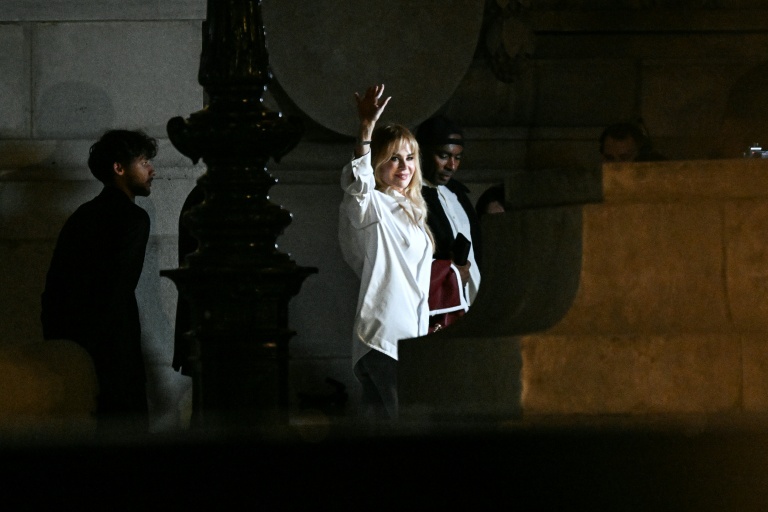
A New Era for Chanel
At the heart of Paris Fashion Week, a new chapter in the storied history of Chanel began. Matthieu Blazy, the newly appointed creative director, unveiled his first collection for the iconic French brand, drawing admiration from a star-studded audience beneath an ethereal display of glowing planets. This event marked the beginning of what is expected to be a pivotal season for the fashion house.
Blazy, who took on the role last December, faced the challenge of moving Chanel beyond the legacy of Karl Lagerfeld, the long-time creative force behind the brand. With only four creative directors in Chanel’s history, Blazy now joins an elite group that includes Coco Chanel herself, Lagerfeld, and Virginie Viard, who recently stepped down.
Despite the grandeur of the setting at the Grand Palais, Blazy chose not to embark on a radical redesign of the brand's classic aesthetic. Instead, he introduced subtle yet bold modifications to the signature tweeds, blouses, and suits. His designs incorporated masculine elements through boxy jackets and shirts, while also showcasing statement jewelry and elegant white silk or vibrant red eveningwear. This approach echoed the influence of Coco Chanel, who often drew inspiration from her boyfriends' wardrobes.
Bruno Pavlovsky, head of fashion business at Chanel, praised Blazy's "discreet" personality and his openness to collaboration. He noted that Blazy has deeply immersed himself in the story of Gabrielle "Coco" Chanel since joining the brand. According to Pavlovsky, Blazy has maintained the distinctive design principles of Chanel while allowing himself the freedom necessary for innovation.
The front row was filled with A-list celebrities, including Penelope Cruz, Kendall Jenner, and Pedro Pascal, as well as new Chanel brand ambassadors Nicole Kidman and Ayo Edebiri. Kidman, known for her glamorous red carpet appearances, made a striking appearance in a simple white button-up shirt and wide-leg jeans.
Initial reactions to the show were overwhelmingly positive. Simon Longland, head of fashion-buying at Harrods, called Blazy's debut "nothing short of a masterclass." This praise underscores the significance of Blazy's work in redefining the future of Chanel.
Chanel, a privately owned luxury brand, holds the position of the second-largest luxury fashion brand by sales globally. The brand's recent financial performance shows a decline, with a 30% drop in operating profit in 2024 to $4.48 billion, as revenue fell 4.3 percent. This context highlights the importance of Blazy's role in steering the brand through a period of economic uncertainty.
Generational Shift in the Fashion Industry
Blazy is part of a broader trend of generational renewal in the fashion industry. Over the past week, several brands have introduced collections led by new chief designers, signaling a shift in leadership and creative direction. Alongside Blazy, Northern Irish designer Jonathan Anderson has made waves at Dior, while Pierpaolo Piccioli has taken on a new role at Balenciaga.
This wave of new appointments reflects a growing need for fresh perspectives in the luxury sector. Bruno Pavlovsky noted that these changes are happening simultaneously across the industry, driven by the necessity for creative renewal.
The luxury market is hoping that this transformation will help counteract declining sales, which have been affected by factors such as a slowdown in China, US tariffs, and general economic uncertainty. As brands like Chanel navigate these challenges, the focus remains on innovation and maintaining their legacy while adapting to new market dynamics.
With Blazy at the helm, Chanel stands at a crossroads, poised to embrace both its rich heritage and the possibilities of the future. The coming seasons will be crucial in determining how effectively the brand can evolve while staying true to its roots.

Post a Comment